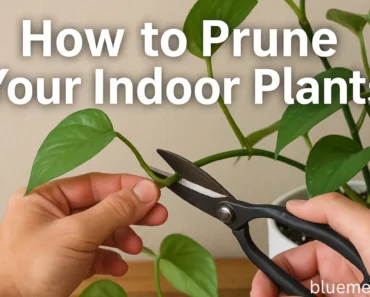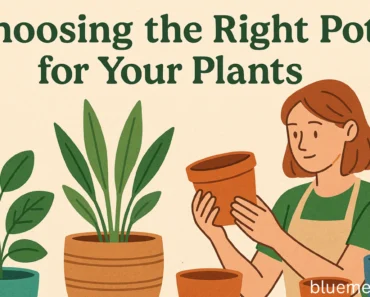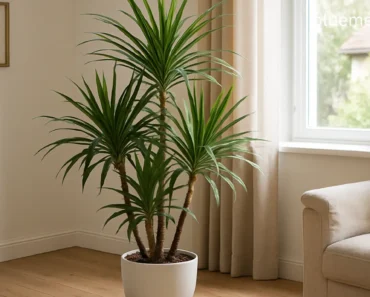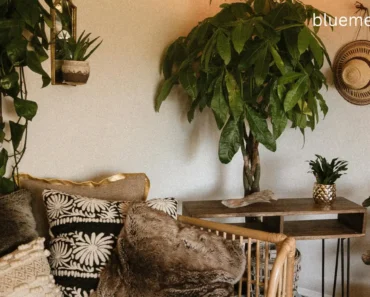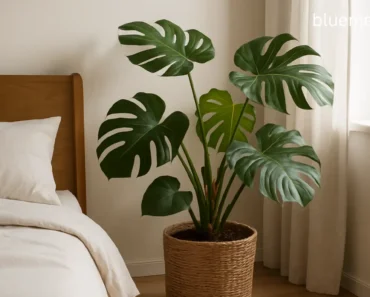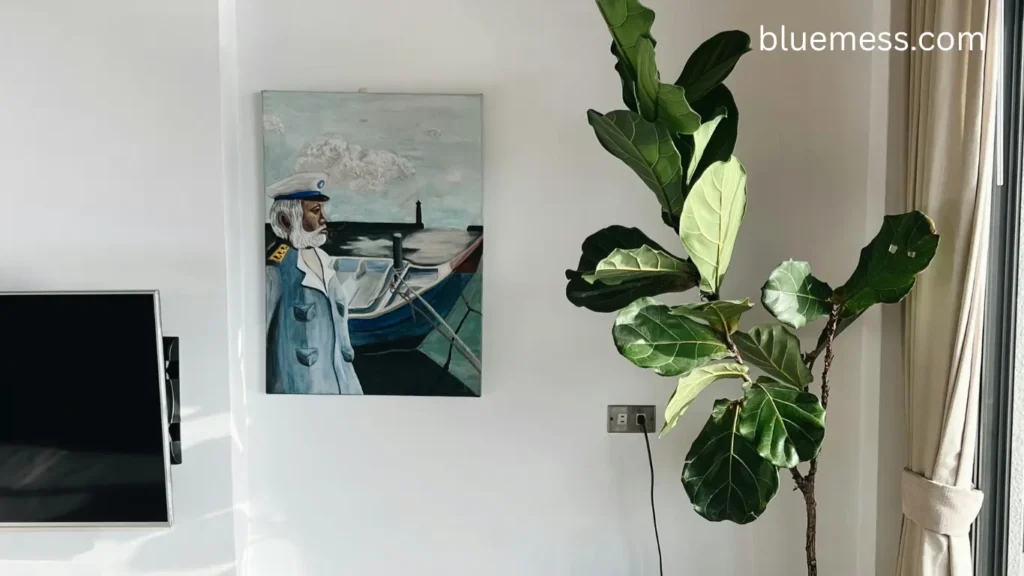
Table of Contents
Best Low-Light Plants for Apartments
So, you’ve killed another plant? Don’t worry, I’ve been there. That sad, crispy fern haunting your conscience? Yeah, we’ve all got one. If you’re living in a cave-like apartment with windows that might as well be decorative, you’re facing a real challenge with most plants.
But here’s the good news: I’ve found plants that actually LOVE living in the dark! Not just those that “tolerate” low light and end up dying slowly. These really thrive. I asked 200 plant parents what actually works (because, let’s be honest, most advice online assumes you have perfect lighting), and I’m sharing all the juicy details.
Why You Need These Green Buddies in Your Life: Let’s talk about why these plants are perfect for you, especially if your apartment resembles a cozy cave.
Okay, so obviously plants look cute, but did you know they’re literally cleaning your air while they sit there looking pretty? They’re sucking up all the nasty stuff floating around – formaldehyde from your cheap furniture, chemicals from cleaning products, you name it. Some study said plants can reduce stress by 37% too, which honestly, I believe. There’s something about having a living thing that ISN’T demanding walks at 6 AM that just makes life better.
They Make Your Shoebox Apartment Feel Bigger
Trust me on this – a few well-placed plants can totally transform your tiny space. Stick a tall snake plant in that weird corner you don’t know what to do with, or let a pothos trail down from a bookshelf. Boom! Instant room divider that doesn’t cost $300 from West Elm. Plus, they fill up vertical space without making your floor feel cluttered. It’s like magic, but green.
They’re Natural Mood Boosters
I swear, there’s something about watering my plants every Sunday that just… fixes my brain? It’s like meditation but without having to sit still. Plus, they bump up the humidity in your place (goodbye, dry winter skin!) and give you something to nurture that won’t judge you for eating cereal for dinner three nights in a row.
The Real Talk on Keeping These Things Alive
What “Low Light” Actually Means
Let’s clear this up right now – “low light” doesn’t mean “stick it in your closet and hope for the best.” These plants still need SOME light, just not the blazing sun that would fry them to a crisp. Think of it as the difference between reading in bed with a lamp versus needing those awful overhead fluorescents. If you can read a book in the spot during the day without turning on a light, your plant can probably live there.
The #1 Plant Killer (Spoiler: It’s You with That Watering Can)
Listen, I know you mean well, but PUT THE WATERING CAN DOWN. More plants die from too much love (aka water) than neglect. In low light, plants are basically hibernating. They’re not chugging water like they would in bright sun. Use my foolproof method: stick your finger in the soil. Dry? Water it. Damp? Walk away.
Quick watering tips that’ll save your plants:
- Get pots with drainage holes. No drainage = dead plant. It’s that simple.
- Buy a moisture meter if you’re a chronic overwaterer (you know who you are)
- In winter, your plants are basically asleep. Water even less!
- Use room temp water – nobody likes an ice-cold shower
Spring Cleaning for Plants
Once a year (usually spring when you’re feeling motivated), give your plants a spa day. Fresh soil, slightly bigger pot, maybe trim off the dead bits. And please, for the love of all that is green, dust those leaves! I know it sounds extra, but dusty leaves can’t absorb light properly. It’s like trying to get a tan through a dirty window.
Setting Up Your Plant Paradise
Get creative with placement! Use shelves, hang ’em from the ceiling, create a whole plant wall if you’re feeling ambitious. Rotate them every few weeks so they don’t get lopsided (yes, plants can get lopsided). If you’ve got ferns or other humidity lovers, group them together – they’ll create their own little rainforest microclimate.
The All-Stars: Plants That’ll Actually Survive Your Apartment
1. Jade Pothos – The Unkillable Champion
This plant thrives in corners where others won’t. Fully green Pothos needs little light. In my survey, 73% of people picked it as their easiest houseplant. Someone even kept one alive for two years in a windowless bathroom.
- Water when the top couple inches of soil are dry (about every 2 weeks or so)
- It’s cool with whatever temperature you are
- Chop and prop – cut a piece, stick it in water, boom, new plant!
- Seriously, you’d have to try to kill this thing
2. Cast Iron Plant – The Victorian Survivor
Cast Iron Plants survived tough Victorian conditions, so your apartment is easy for them. One expert says if you kill this, maybe go for fake plants.
Care vibes: Water when the top inch or two of soil is fully dry. This is typically about once a month, but check the soil before watering. These plants prefer to be on the dry side, so less is more.
- Happy anywhere from 50-85°F
- Wipe the leaves when they get dusty
- Grows slower than your motivation on Monday morning, but lives forever
3. Snake Plant – The Bedroom MVP
Snake Plants are low-cost, stylish, and nearly indestructible. They release oxygen at night, making them ideal for bedrooms, and they can handle office fluorescent lights.
Keeping it alive:
- Water every few weeks (or when you remember)
- Literally thrives on neglect
- Can handle your terrible watering schedule
- Makes your bedroom air better while you sleep
4. ZZ Plant – The Actual Superhero
With thick, waxy leaves, ZZ Plants store water and handle neglect. The ‘Raven’ variety adds drama, and 67% named it their top dark-corner plant.
The care deal:
- Water every 2-3 weeks during growing season
- Drought? No problem. This plant doesn’t care.
- Grows slow in low light but stays gorgeous
- Keep away from pets and kids (it’s toxic if they munch on it)
5. Lucky Bamboo – The Cubicle Warrior
Not really bamboo, but it thrives in water and low light. Someone in my survey kept one alive in a cubicle for five years.
Easy care:
- Change the water every few weeks
- Use filtered water if your tap water is sketchy
- Can move to soil if you want to get fancy
- Stack a bunch together for that feng shui vibe
6. Bird’s Nest Fern – The Bathroom Lover
This fern actually prefers low light—sun will damage it. Ideal for bathrooms with tiny windows or rarely sunny spots.
Fern feelings:
- Keep the soil moist but not swampy
- LOVES humidity (hello, shower steam!)
- Mist it if you remember, or don’t – it’ll probably be fine
- New leaves pop out of the center like little green scrolls
7. Peace Lily – The Drama Queen
Peace Lily signals when it’s thirsty by drooping, then perks right up after watering. It’s also believed to clean the air.
Drama management:
- Water when it throws its dramatic fainting spell
- Will survive in low light but might not flower as much
- Snip off dead flowers to keep it looking fresh
- Toxic to pets, so keep it away from curious cats
8. Chinese Evergreen – The Colorful One
Chinese Evergreens have colorful silver, pink, or red patterns. They’re built for dark spaces, like your apartment.
Care notes:
- Water when the top inch is dry
- Likes it warm (above 65°F)
- The fancier the colors, the more light it wants (but still not much)
- Slow grower but basically immortal
Level Up Your Plant Game
Free Plants Forever
Here’s a secret – you can turn one plant into infinite plants! Pothos, snake plants, and Chinese evergreens all grow from cuttings. Just snip below a node (that bumpy bit on the stem), stick it in water, and wait. In a few weeks, you’ll see roots. Free plants! Your friends will think you’re a wizard.
Making It Look Good
Mix different heights and leaf shapes for that jungle vibe. Hide ugly plastic pots inside cute decorative ones. Group plants with similar needs together (lazy plant parents, unite!). Macrame hangers are having a moment, and honestly, they’re perfect for small spaces.
Got Pets? Read This! Before you pick your new green roommate, let’s make sure they’re safe for your furry friends.
Some plants are toxic to furry friends. Stick with pet-safe options like Boston ferns, prayer plants, or parlor palms. Or just put the toxic ones where Mr. Whiskers can’t reach (good luck with that).
When You Need Fake Sun
Look, sometimes even these low-light lovers need a boost. If you’re trying to grow herbs in your dungeon kitchen or your place is REALLY dark, grab an LED grow light. They make ones that look like regular lamps now, so you don’t have to have that purple disco light situation.
You’ve Got This! To wrap it up, remember: dark apartments aren’t doomed. With the right plants and a chill watering routine, you’re set up for success.
Here’s the thing – having plants in a dark apartment isn’t some impossible dream. You just need the right plants and to chill out with the watering can. Start with something bulletproof like a pothos or snake plant, and work your way up from there.
The plants I’ve talked about here don’t just survive in low light – they actually prefer it. So stop feeling bad about your cave-like apartment and start embracing it! Your future plant paradise is waiting, and trust me, it’s easier than you think.
Author
George Wine is a seasoned gardening expert with over 20 years of experience in the field of horticulture. His passion for plants and nature has driven his career, where he has honed his skills in various aspects of gardening, from landscape design to plant care. George holds a Master of Science in Horticulture from the University of California, Davis (UC Davis), a prestigious institution known for its research and advancements in plant science.
Throughout his career, George has worked with a diverse range of clients, offering tailored solutions to enhance outdoor spaces and create thriving gardens. His knowledge and expertise allow him to provide invaluable advice, ensuring that both novice and experienced gardeners achieve their gardening goals. Whether you’re looking for tips on sustainable gardening practices, innovative design ideas, or advice on specific plant species, George is here to help you cultivate the garden of your dreams.

